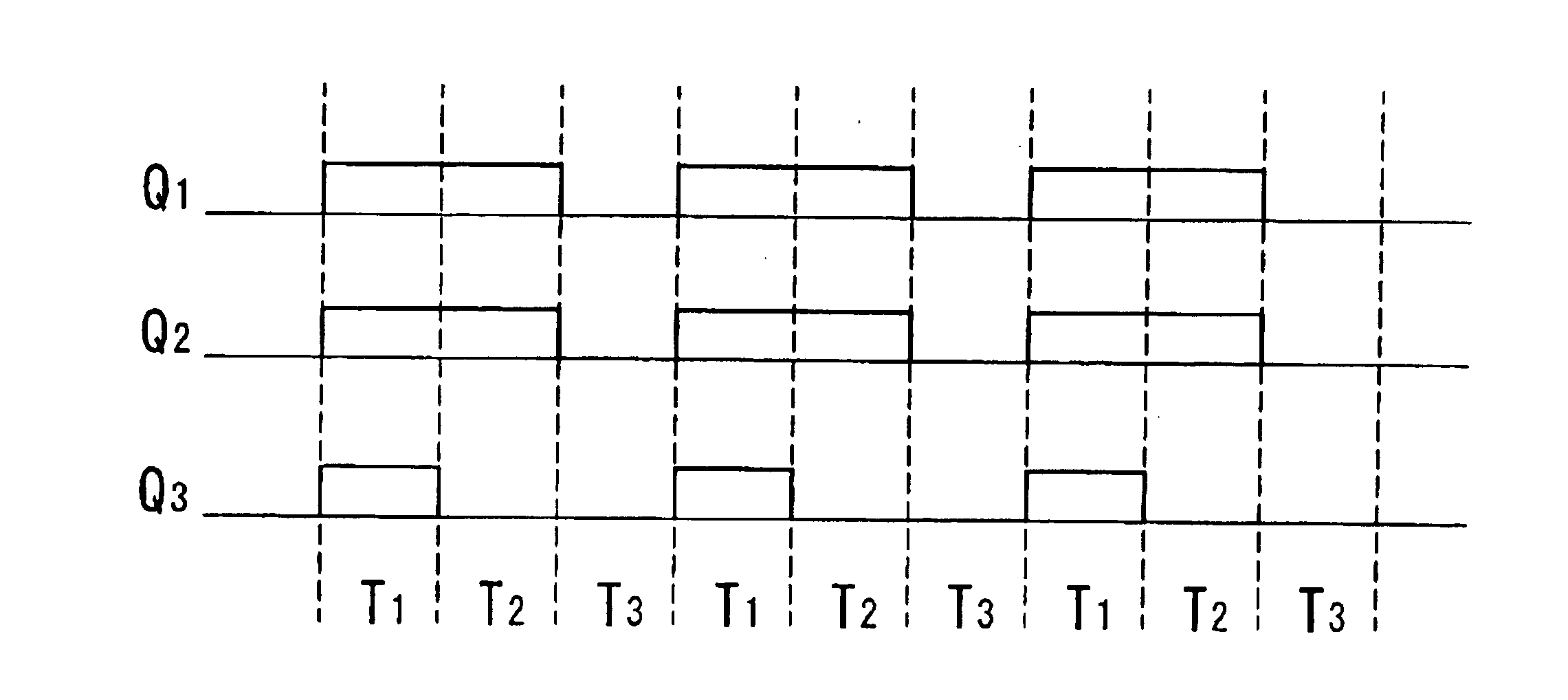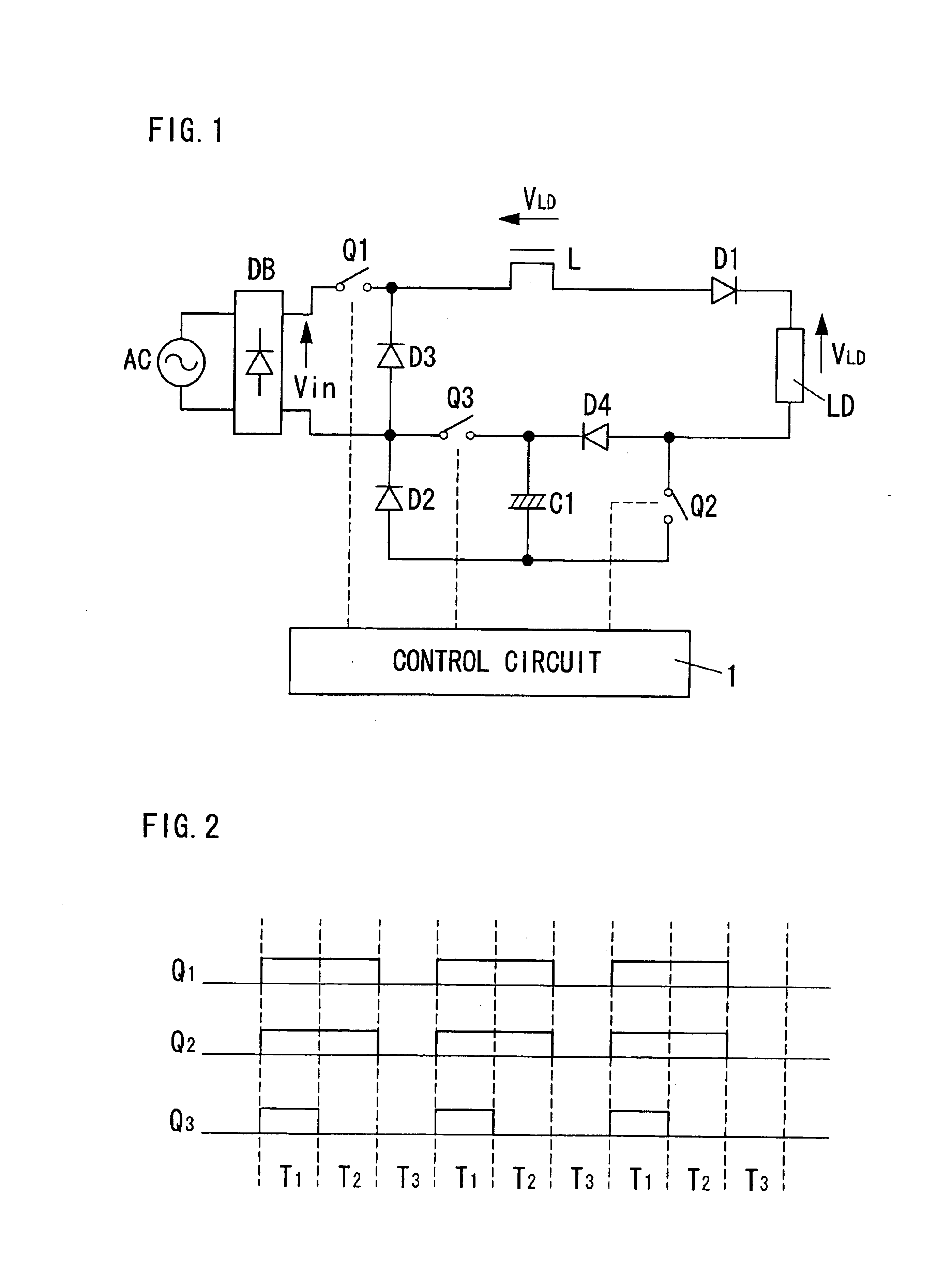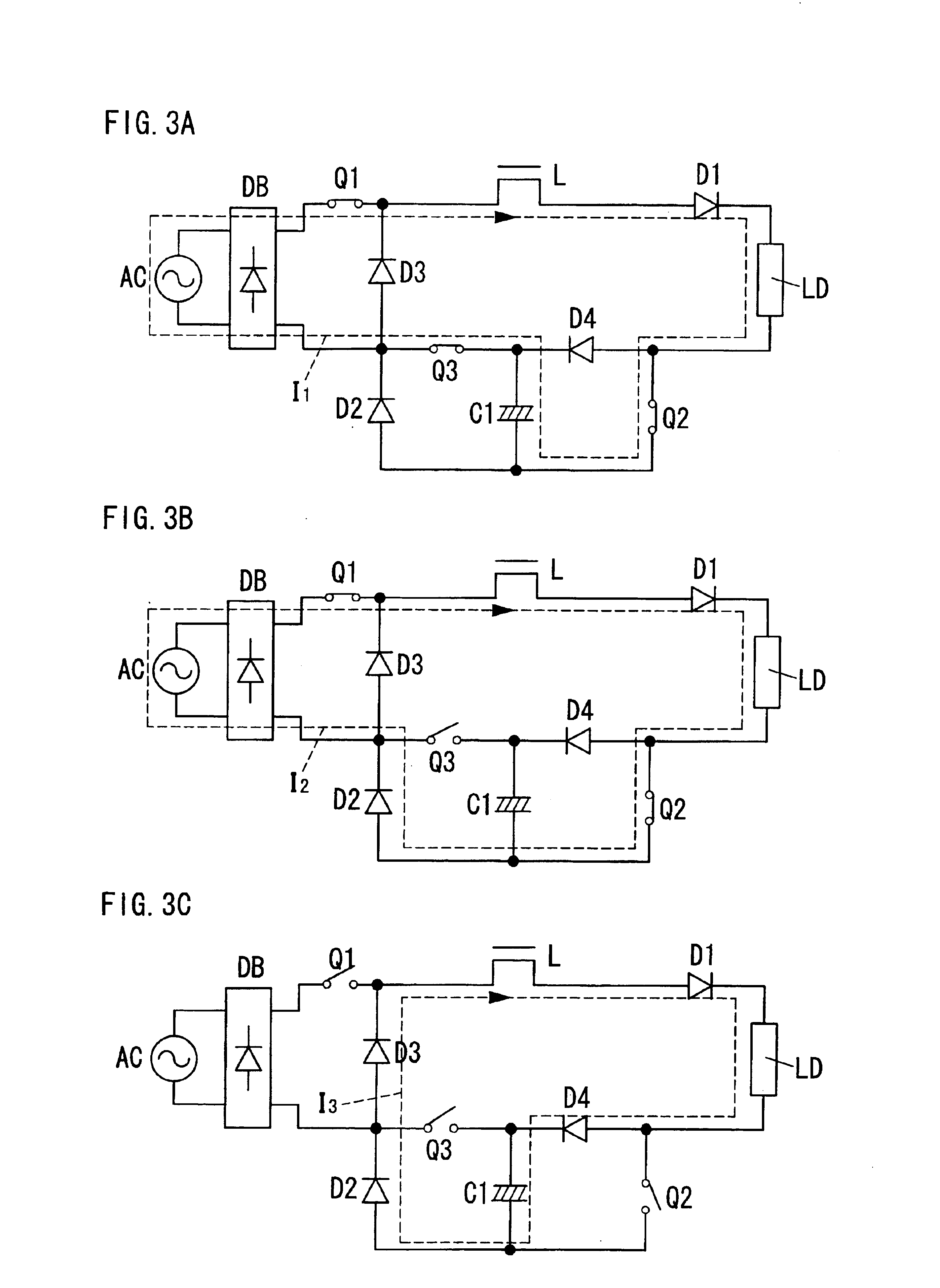Power converter
a power converter and converter technology, applied in the direction of automatic control, process and machine control, instruments, etc., can solve the problem of difficult miniaturization of circuits, and achieve the effect of raising the freedom of circuit design
- Summary
- Abstract
- Description
- Claims
- Application Information
AI Technical Summary
Benefits of technology
Problems solved by technology
Method used
Image
Examples
sixth embodiment
A power converter in accordance with a sixth embodiment of the present invention will be explained based on FIGS. 22-25. A circuit arrangement of the power converter is identical to the first embodiment, and a control system of the control circuit 1 is different from the first embodiment. The similar parts of these embodiments are identified by the same reference character. The control circuit 1 controls the first, second, and third switching elements Q1-Q3 in three different on / off patterns, as shown in FIG. 22. In a first pattern, the second and third switching elements Q2 and Q3 are turned on. In a second pattern, only the second switching element Q2 is turned on. In a third pattern, only the first switching element Q1 is turned on. Each switching element is turned on and off at a frequency higher enough than the frequency of the AC source (50-60 Hz), for example, dozens—several hundred kHz.
FIGS. 23A-23C show a current which flows through the circuit in a first period T1 controll...
seventh embodiment
A power converter in accordance with a seventh embodiment of the present invention will be explained based on FIGS. 26-28. This power converter is designed to convert AC power from an AC source into DC power and subsequently convert the DC power to AC power in order to supply an alternating current of rectangular wave of low frequency, for example, at 100 Hz, to a load such as a discharge lamp. This power converter includes a rectifier circuit DB which rectifies the AC current from the AC source to give a DC voltage, five switching elements Q1-Q5, one inductor L, and one smoothing capacitor C1. The first switching element Q1 and the second switching element Q2 are connected in series with a first diode across the rectifier circuit DB, and the first diode D1 is inserted between a high voltage side of the rectifier circuit DB and the first switching element Q1, and a cathode of the first diode D1 is connected to the first switching element Q1. The third switching element Q3 and the fo...
eighth embodiment
A power converter in accordance with an eighth embodiment of the present invention is shown in FIGS. 29, 30. A circuit arrangement of the power converter is identical to the seventh embodiment, and a control system of the control circuit 1 is different from the seventh embodiment. The similar parts of these embodiments are identified by the same reference character. The control circuit 1 controls the first, second, third, fourth, and fifth switching elements Q1-Q5 in six different on / off patterns as shown in FIG. 29 to always pass the current to the load and the inductor, improving the harmonic distortion, namely, a power-factor. These six patterns are classified into a positive cycle in which three continuous patterns are repeated, and a negative cycle in which remaining three continuous patterns are repeated. Each of the positive cycle and the negative cycle is repeated alternately at a low frequency, for example, at 100 Hz. FIG. 29 shows a control system to control the first, fou...
PUM
| Property | Measurement | Unit |
|---|---|---|
| frequency | aaaaa | aaaaa |
| frequency | aaaaa | aaaaa |
| frequency | aaaaa | aaaaa |
Abstract
Description
Claims
Application Information
 Login to View More
Login to View More - R&D
- Intellectual Property
- Life Sciences
- Materials
- Tech Scout
- Unparalleled Data Quality
- Higher Quality Content
- 60% Fewer Hallucinations
Browse by: Latest US Patents, China's latest patents, Technical Efficacy Thesaurus, Application Domain, Technology Topic, Popular Technical Reports.
© 2025 PatSnap. All rights reserved.Legal|Privacy policy|Modern Slavery Act Transparency Statement|Sitemap|About US| Contact US: help@patsnap.com



